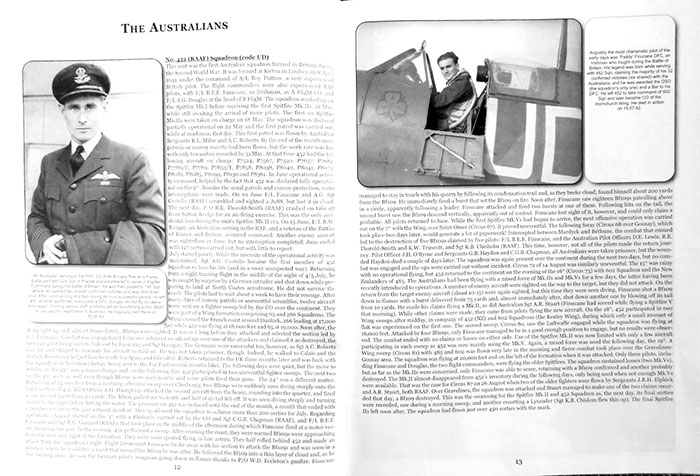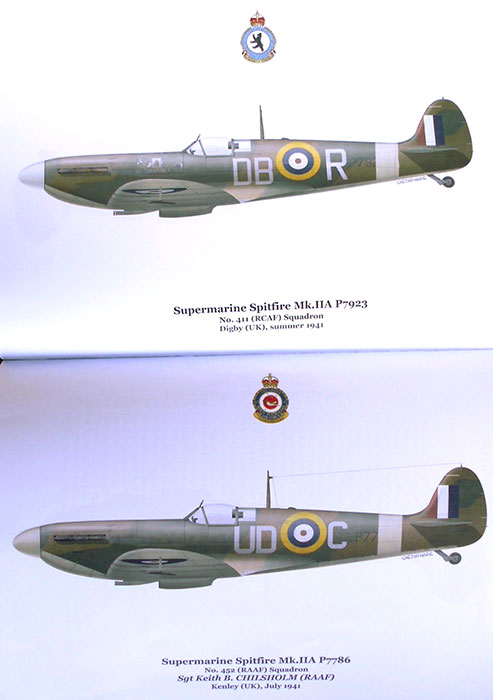Squadrons!
Number 38
The Supermarine Spitfire Mk.II
Rhodesian, Dominion & Eagle Squadrons

Philedition
S u m m a r y : |
Catalogue Number, Description and ISBN: |
Squadrons No. 38
The Supermarine Spitfire Mk.II - The Rhodesian, Dominion and Eagle Squadrons
by
Phil H. Listeman
Illustrations by Gaetan Marie
ISBN: 979-1096490-60-8 |
Contents & Media: |
Soft-cover format, 48 pages. |
Price: |
Available online from www.raf-in-combat.com and selected retailers |
Review Type: |
First Look |
Advantages: |
Useful to both modellers and those interested in the history of aircraft and Commonwealth involvement in WWII, good set of well reproduced personal photos and very nice coloured profiles. |
Disadvantages: |
None noted. |
Conclusion: |
This is an interesting and valuable volume for both the historian and modeller that adds another chapter to the literature on the Spitfire. Recommended. |
Reviewed by Graham Carter

This is a 44-page case-bound A4 ‘bookazine’ with a glossy card cover and is the latest in this long series of editions covering specific squadrons using a variety of Allied fighters and light bombers during WWII. It contains 40 pages of information on semi-matte paper and 4 more that are either blank or advertise other volumes.

This volume covers squadrons crewed by Rhodesians, Americans and from the Dominions ( Australia, NZ and Canada ) that were fully operational on the Spitfire Mk II and based in the UK in 1940-41 . This is quite a narrow topic as some thirteen squadrons overall flew this aircraft with these squadrons, and this book covers these for the short time the mark was used in GB. The RCAF squadrons are numbers 401, 403, 411, 412, 416 and 417, Rhodesian squadron was 266, while the RAAF ones were 452 and 457. New Zealanders manned 485, while the US pilots were on the Eagle Squadrons numbered 71,121 and 133

The main part of the volume is concerned with these squadrons. Each is treated with a variable coverage looking at a their actions, bases, and personnel. Each is accompanied by tables of battle claims, and aircraft losses due to action or accidents, interspersed with useful photos of aircraft and personnel from private sources, all in B&W. Quality is a little variable depending upon the originals, but are interesting in that they often show casual scenes around the planes. There follows an ‘In Memoriam’ table of details of the nineteen pilots who lost their lives while flying Spitfire IIs with these squadrons.

The volume then concludes with six excellent colour profiles of representative aircraft from the squadrons - 71, 121, 266, 411, 452, and 457 - by Gaetan Marie of BravoBravo Aviation.
This is an interesting and valuable volume for both the historian and modeller that adds another chapter to the literature on the Spitfire. Recommended.
Thanks to Phil Listemann for the review sample.
Review Text Copyright © 2019 by Graham Carter
This Page Created on 28 September, 2020
Last updated
28 September, 2020
Back to HyperScale Main Page
Back to Reviews Page

|
